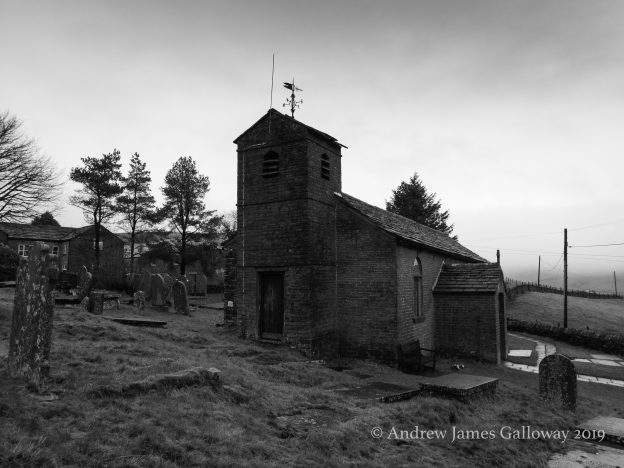For some years now I have participated in an Advent Book Group located on social media. I have, in the past, found it helpful to reflect upon the meaning of the Christian season of Advent, as a way to reflect upon the year gone by and a time to review the path ones own life has taken. Advent is so often overshadowed by the commercial celebrations of Christmas, which now begin immediately following the American festival of Thanksgiving at the end of November. As far as the Church is concerned, officially, the season of Christmas does not begin until midnight on Christmas Eve, but as we all know, our culture’s aversion to delayed gratification means Christmas starts when multi-national corporations say it starts.
And so I see my participation in the little online book group as a form of rebellion against the leviathan of corporate capitalism. That said, I have just put up my Christmas tree on 1 December. Something which would have been unthinkable when I was a child.
This year the group is reading Frequencies of God by Carys Walsh, a collection of reflections on the work of the Welsh poet R S Thomas.
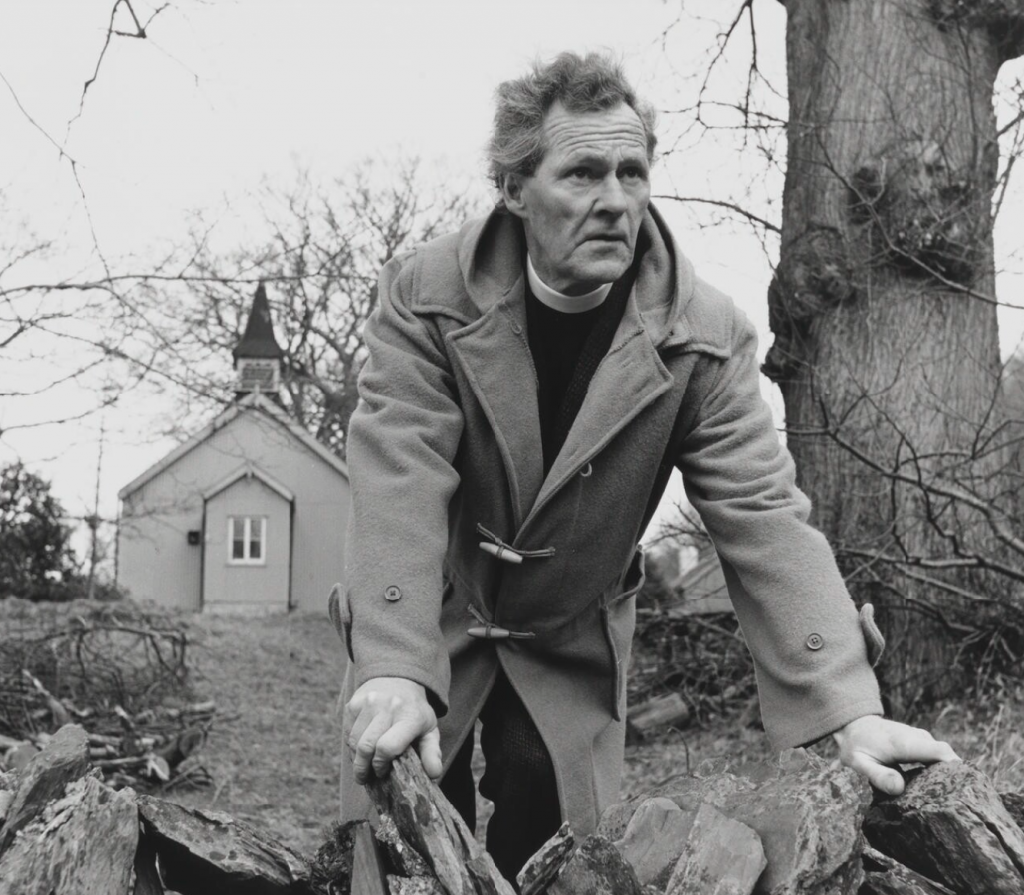
R S Thomas 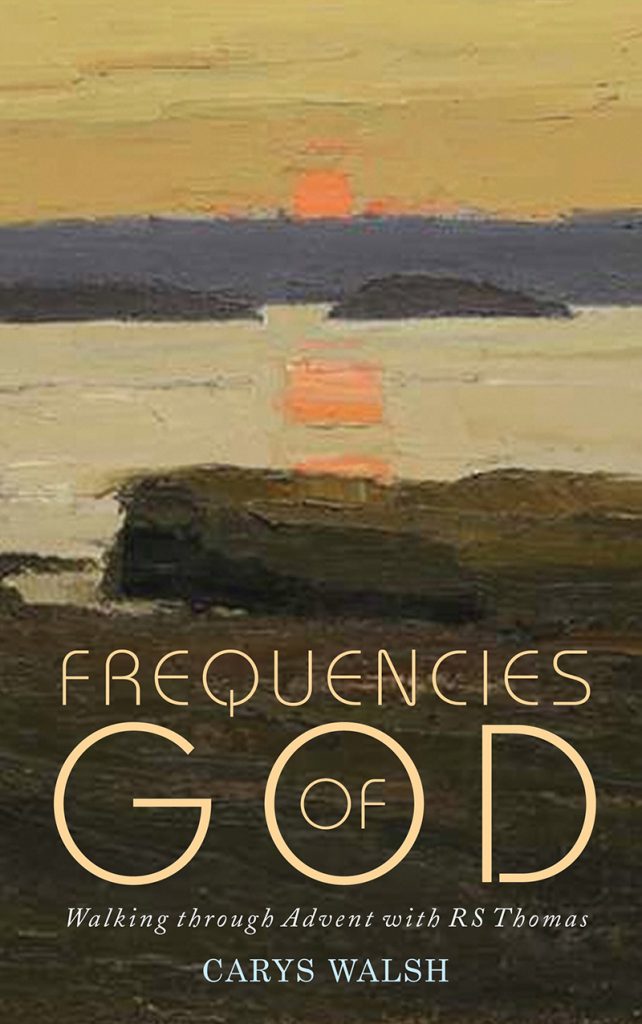
The poem for Week 1, Day 3 is In Church.
Often I try
To analyse the quality
Of its silence. Is this where God hides
From my searching? I have stopped to listen,
After the few people have gone,
To the air recomposing itself
For vigil. It has waited like this
Since the the stones grouped themselves about it.
These are the hard ribs
Of a body that our prayers have failed
To animate. Shadows advance
From their corners to take possession
Of places the light held
For an hour. The bats resume
Their business. The uneasiness of the pews
Ceases. There is no other sound
In the darkness but the sound of a man
Breathing, testing his faith
On emptiness, nailing his questions
One by one to an untenanted cross.
Here we have some powerful imagery from R S Thomas. Imagery with which I am familiar. There have been many times I have sat, alone, in country churches as the darkness thickens around me.
It’s a bit of a Boxing Day tradition for me to walk from Tegg’s Nose, through Macclesfield Forest, up to St Stephen’s Church, also known as the Forest Chapel. By the time I have walked through the forest to the church it is often early afternoon, but at that time of year the darkness has already mustered on over the Pennine Hills to the west.
The following is from an article I wrote for the Great Outdoors magazine.
To the north I took refuge from the inclement weather inside one of the jewels of the western Peak District. As the dates above the gabled entrance indicate, the Forest Chapel, or Saint Stephen’s Church as it was consecrated, was almost entirely re-built in 1834 following a fire, but stands on the site of a former chapel of ease constructed in 1673, the stone bearing this inscription having been preserved from the original building. To step inside the Forest Chapel is to step backwards in time to the austere non-conformist existence of the generations who have eked out a harsh living from the bleak Pennine moorlands since the Royal Forest of Macclesfield became common land in the 15th Century.
I sat for some time as rainwater from the stone-clad roof collected in the lead guttering and splish-splashed onto the paving outside, until ultimately the light in the chapel brightened and brief shafts of sunlight, at acute angles from the south transept windows, blessed the silent nave, and the rain stopped, like the silence that follows the prayers of four hundred years.
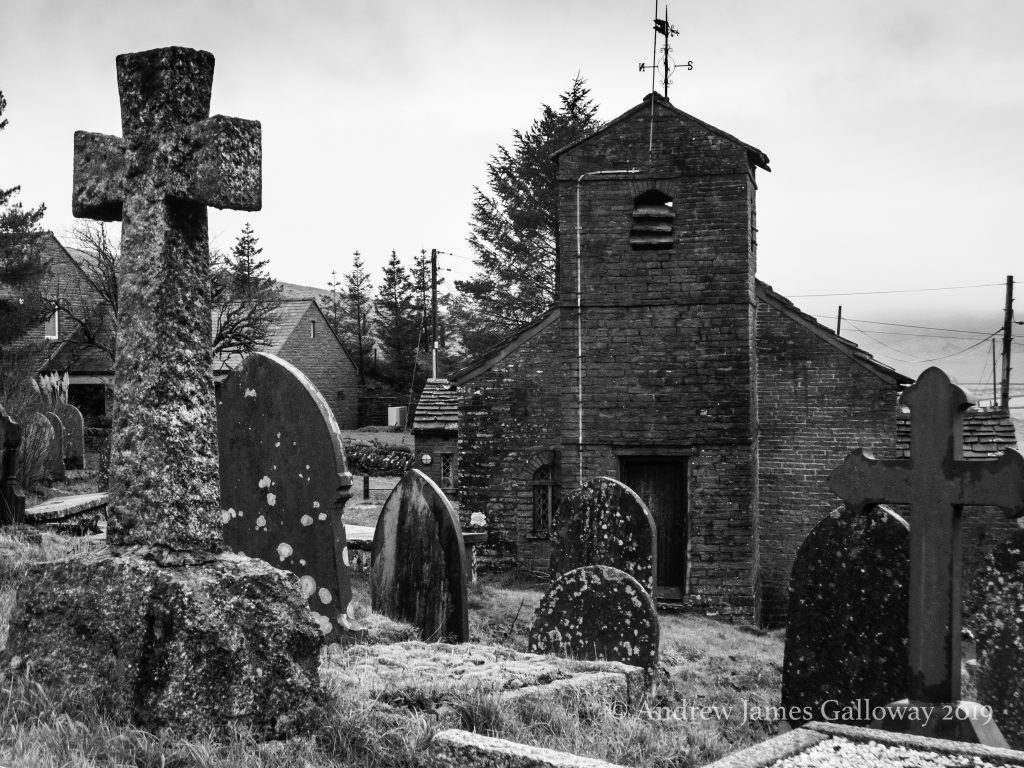
A similar experience too place some years earlier in The Kirk of Saint Ternan, Arbuthnott, Laurencekirk. I had been walking in snow and ice the day before on the eastern edge of the Cairngorms; had fallen and twisted my knee quiet badly. Deciding to assign the next day to low-impact activities I paid a visit to the Lewis Grassic Gibbon Centre.
For those unfamiliar with LGG, he wrote Sunset Song, a novel set in the early twentieth century about the loss of tradition agricultural practice in rural Scotland. It is a short walk from the visitors centre to the kirkyard of St Ternan’s, where LGG is buried. At that latitude during the liminal week betwixt Christmas and New Year’s Eve the light begins to fade not long after lunch. Not a soul in sight I took refuge in the church and sat for sometime contemplating the wreckage of my life and the pain searing through my knee. Nailing my questions one by one to an untenanted cross.
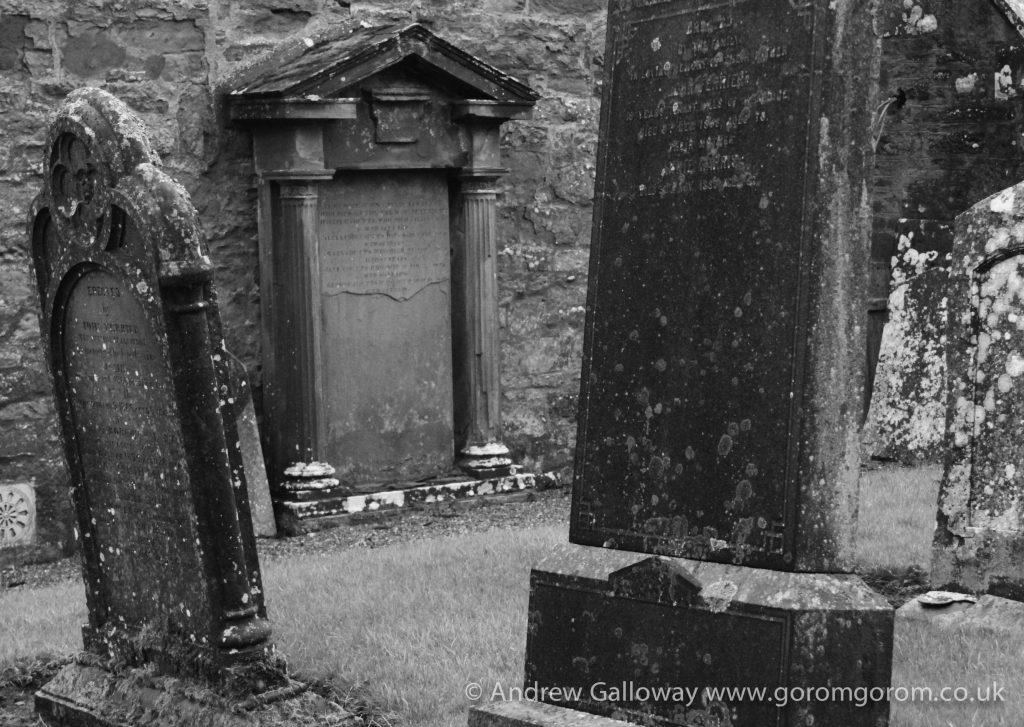
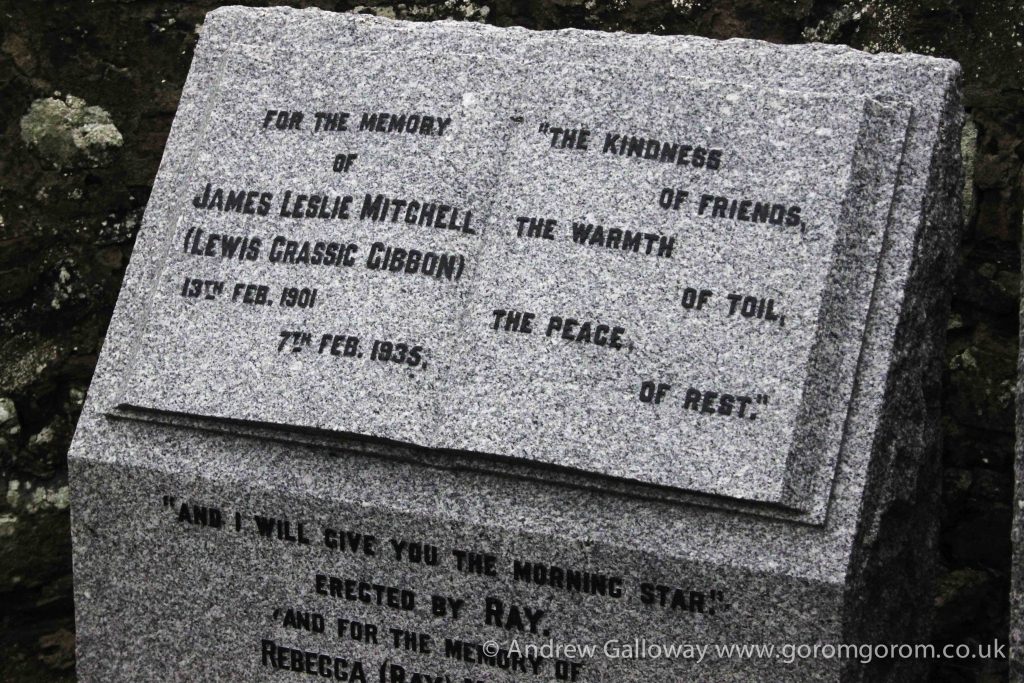
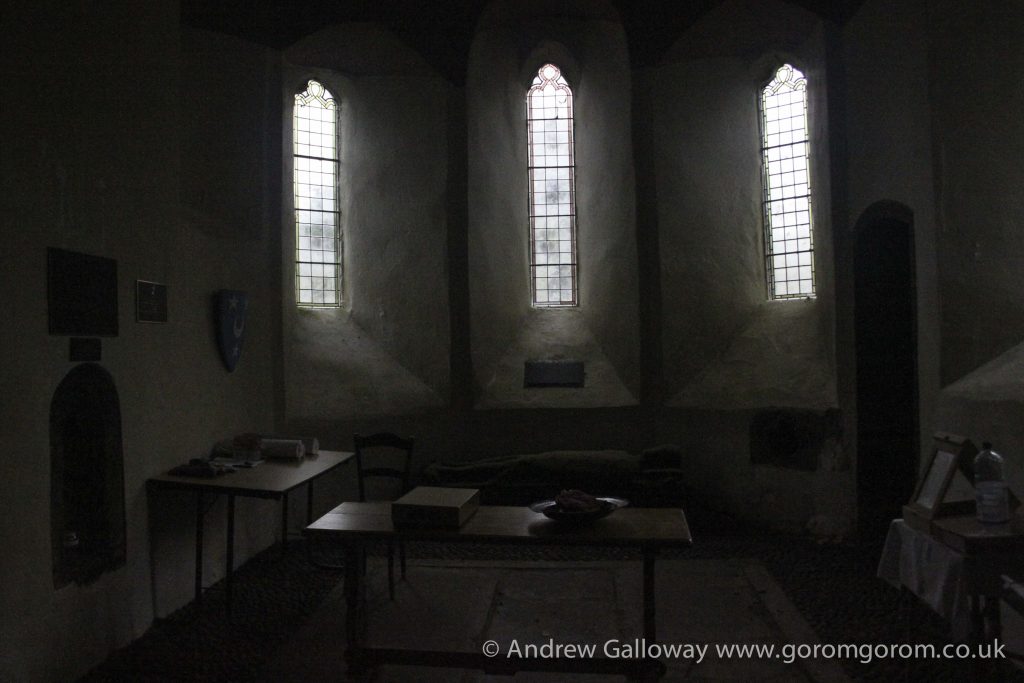
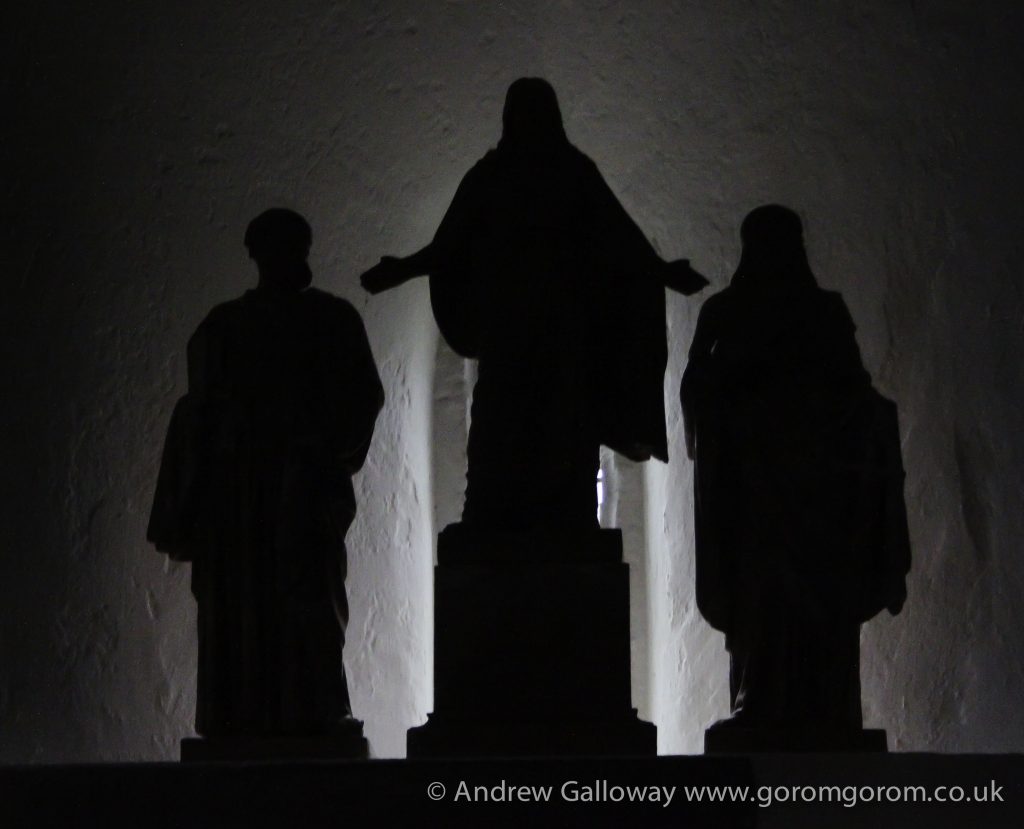
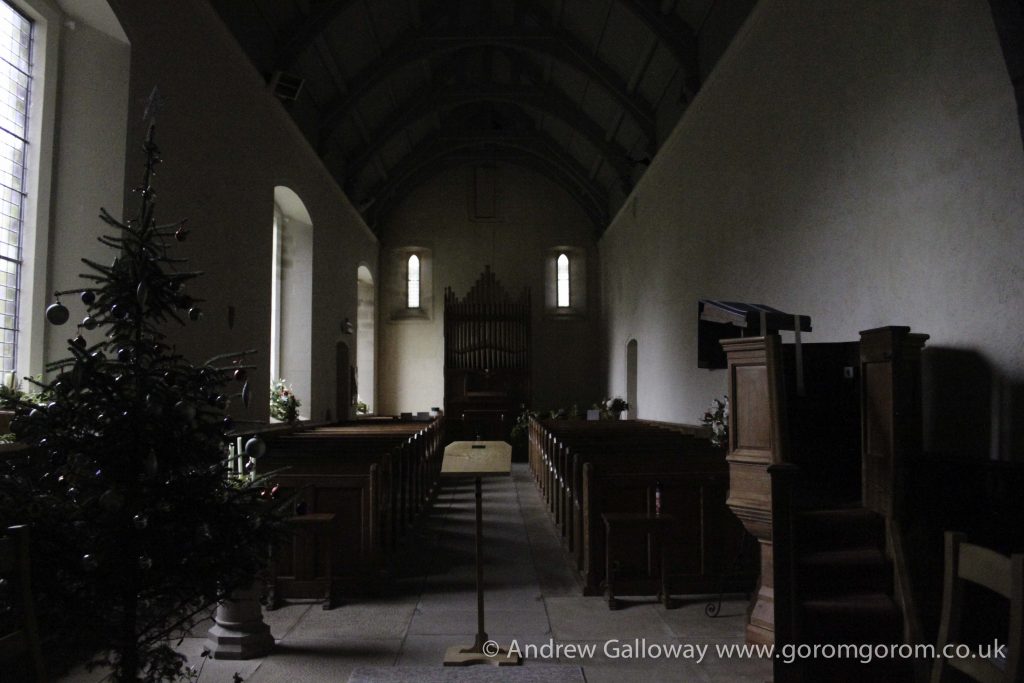
St Ternan’s Kirk, Arbuthnott

